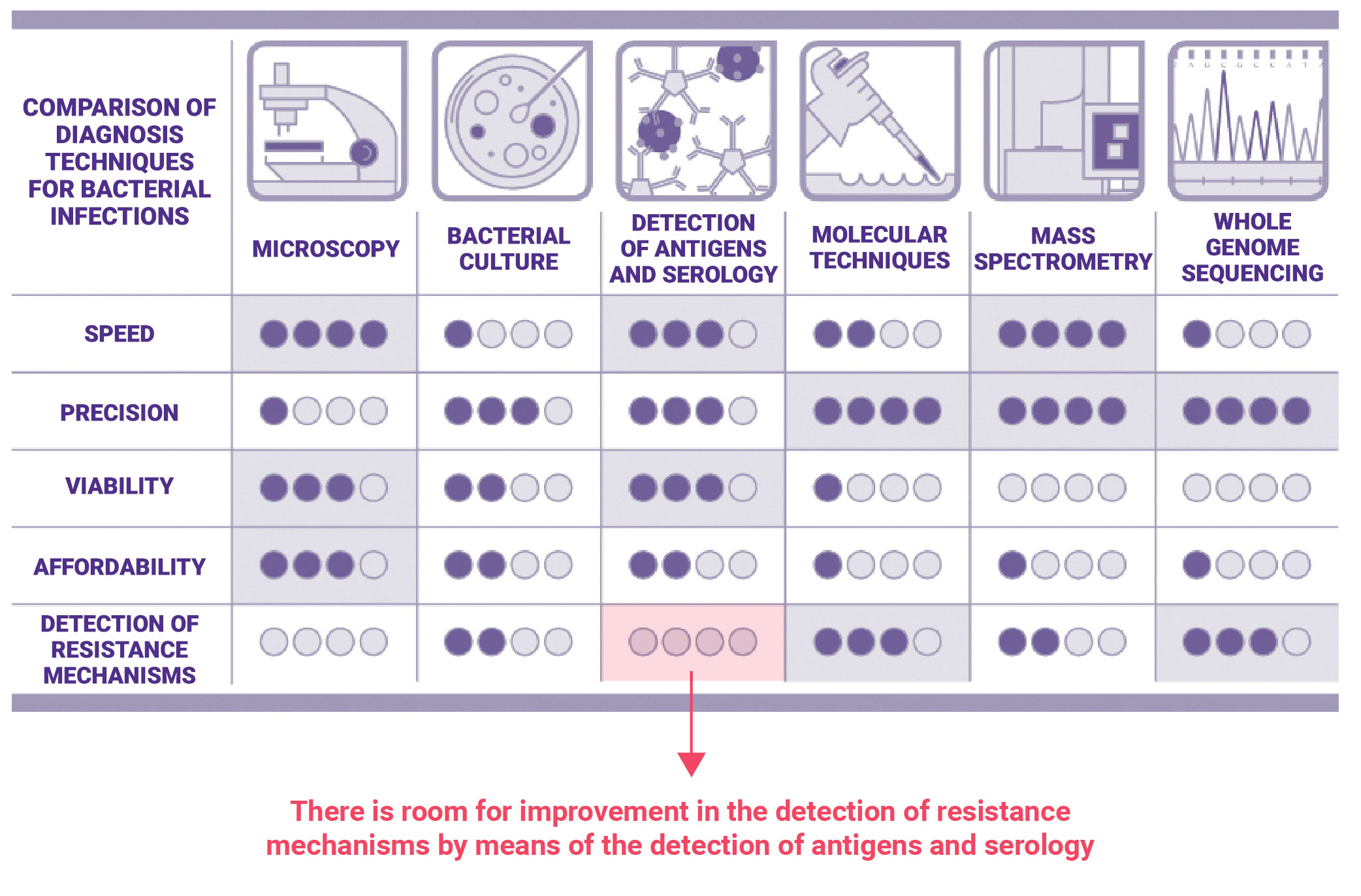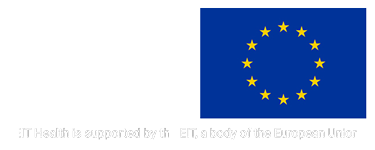Current strategies for diagnosis
and detection of resistance
Just like in a battle it is important to obtain information of the enemy (troops, resources, weapons), in the war against antimicrobial resistance it is essential to know, as quickly as possible, what type of bacteria and resistance mechanisms we are dealing with in order to choose the adequate treatment. Normally, the traditional bacterial culture techniques require between 16 and 32 hours to isolate and identify the pathogenic organism. In contrast, real-time detection would permit adapting immediately the treatment to the bacteria concerned. This would not only result in a better treatment of the patient, but also in the reduction of the unnecessary use of wide-spectrum antibiotics that promote resistance.
Sensitive, rapid, low cost and user-friendly tests need to be implemented in clinical microbiology laboratories.
What do current diagnose techniques look like?
Several methods already exist to detect antimicrobial resistance.
– Bacterial culture methods
are based on a routine workflow that requires until 30 hours since the sample is received at the microbiology departments until the antibacterial resistance profile is defined. During this time, an empirical treatment is given to the patient, with the risk of giving an inappropriate antibiotic and thus, contributing to the spread of resistance and give an ineffective treatment to heal the infection.
– Biochemical tests and mass spectrometry methods
(MALDI-TOF)
detect the enzymatic activity of β-lactamases and carbapenemases. However, these techniques require isolated bacteria and procedures with non-compatible delays, which take at least 16 hours.
– Molecular methods
(such as end-point PCR and real-time PCR) can be used in single or multiple formats targeting β-lactamases, with high specificity and sensitivity. However, these techniques are expensive.
What would the ideal diagnose technique look like?
A diagnosis in real time would permit choosing the right treatment for the patient from the beginning and reducing the unnecessary use of antibiotics. In addition to being rapid, the ideal diagnostic technique needs to be sensitive (detect the disease-causing bacterium even when at low numbers) and specific (distinguish it from other similar bacteria); inform on the presence and type of resistance genes; be feasible in low and middle-income countries (without requiring highly specialized personnel or equipment); and be affordable.


